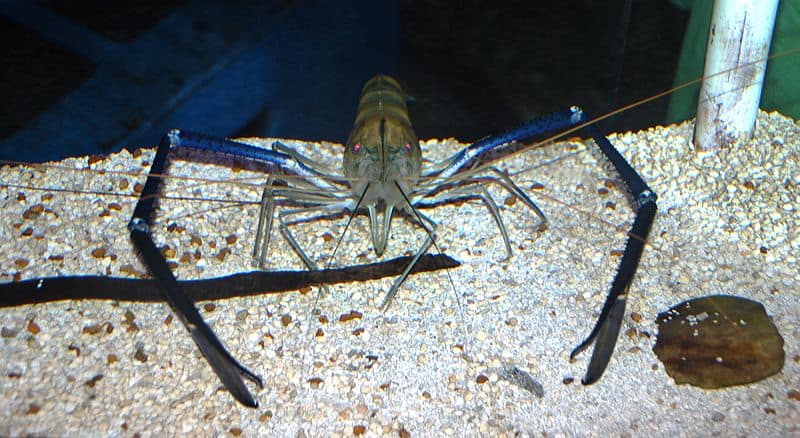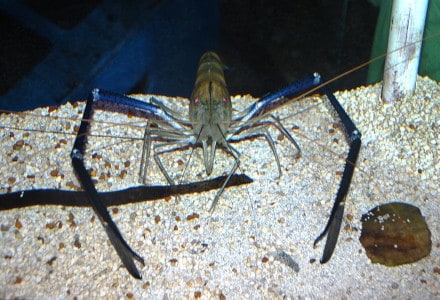
Giant Freshwater Prawn Facts
- Most notably, the remarkable Giant Freshwater Prawn truly lives up to its common name. That holds true because, as the term implies, it ranks as one of the largest of all known related species.
- The impressive invertebrate also has a surprisingly broad natural range. However, it did not remain limited to that area. As a result of the actions of man, it became introduced to a number of other regions.
- Further, in those regions the enormous crustacean now constitutes an invasive species. In addition, these areas include a significant part of the world. That includes China, Africa, and New Zealand, among others.
- However, in its native range it plays an important role as a commercial food source. Thankfully, it still appears to exist in large numbers. Due to this, the IUCN presently lists it as Least Concern.
Related Articles
Giant Freshwater Prawn Physical Description
Firstly, the aptly named Giant Freshwater Prawn earns its name. However, it also displays a moderately large degree of sexual dimorphism. In this, it remains consistent with the general tendency among crustaceans.
Further, in the case of this decapod, males average roughly 35% larger than the females. Firstly, females attain an average head-to-tail length of about 9.8 in (25 cm). But the larger males typically reach a total length of roughly 12.6 in (32 cm).
Yet the genders also differentiate themselves in another way. The male has a narrower abdomen, and a significantly longer second pair of walking legs. Furthermore, in males, these can reach be twice the length of the body.
Finally, though, the coloring of the creature may be its most outstanding characteristic. Primarily, this consists of varying shades of brown or dark green. But, distinguishing them even more, among males, the walking legs often display a brilliant blue color.
- Kingdom: Animalia
- Phylum: Arthropoda
- Class: Malacostraca
- Order: Decapoda
- Family: Palaemonidae
- Genus: Macrobrachium
- Species: M. rosengergii
Giant Freshwater Prawn Distribution, Habitat, and Ecology
First of all, the incredible Giant Freshwater Prawn evolved as native to a wide range of the Indo-Pacific region. Additionally, this area roughly extends from India, through Southeast Asia and parts of Australia.
In addition, it typically inhabits both tropical and subtropical climates within that range. As the name implies, it also primarily lives in fresh water. This consists of various streams and shallow sections of rivers.
However, during its planktonic stage, the young individual lives in brackish water. It therefore lives in the area where the stream or river meets the ocean. But, once it matures, it permanently moves to fresh water.
Lastly, it has so far managed to maintain its population, despite commercial cultivation. This it does through sheer numbers. That’s because each female lays between 10,000 – 50,000 eggs, and does so up to 5 times each year.
Species Sharing Its Range
Check out our other articles on Native North American Mammals, Giant Trevally, Onyx River, Jade Vine, Eastern Diamondback Rattlesnake, Orca, Multicolored Asian Lady Beetle

